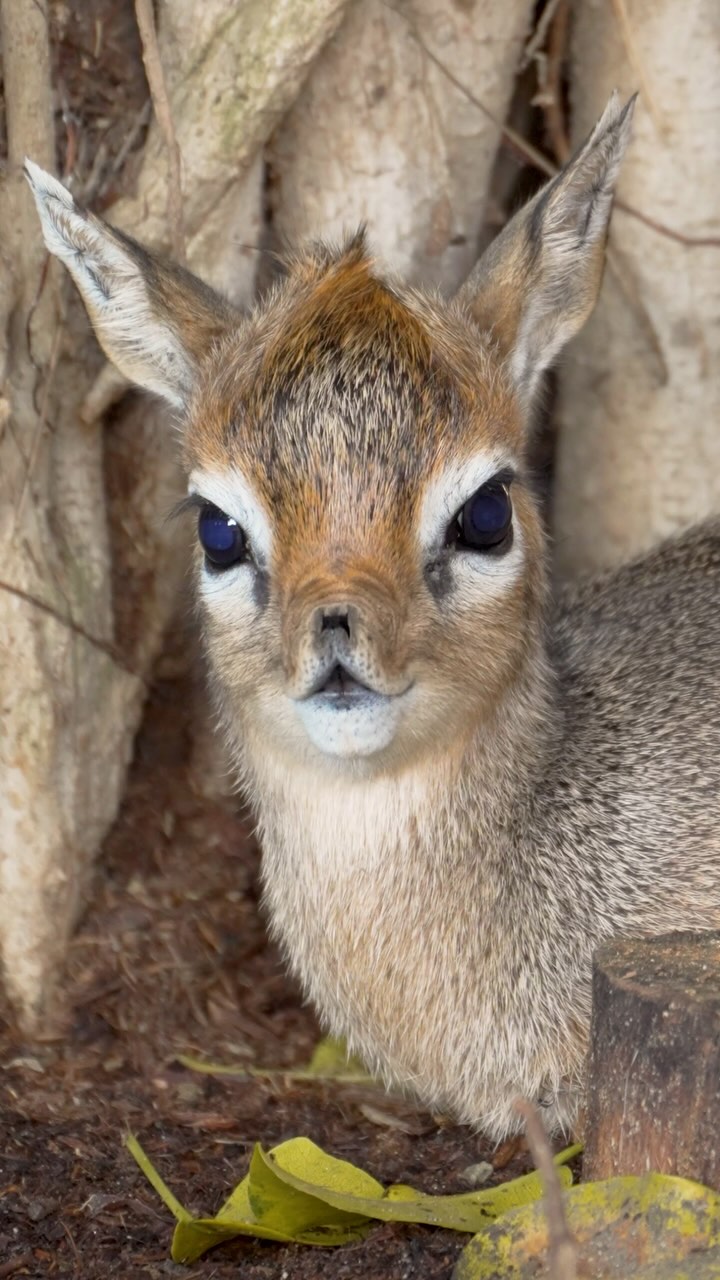- Overview of the dik-dik species and its significance in wildlife ecosystems.
- Details about the birth, growth, and development of the new male dik-dik calf at the Zoo.
- Conservation efforts and the importance of protecting the dik-dik species in their natural habitat.
- Insights into zoo management and the role of modern zoos in wildlife conservation.
- Challenges and opportunities in raising awareness and educating the public about lesser-known species like the dik-dik.
Dik-diks, small antelopes native to eastern and southern Africa, play an important role in their ecosystems. Standing barely 12 to 16 inches tall at the shoulder and weighing around 7 to 16 pounds, these diminutive creatures are named for the alarm calls females make when startled. Their petite size and keen senses make them intriguing subjects of study for zoologists and conservationists. Understanding their behavior, diet, and survival mechanisms is crucial to appreciating their ecological niche and fostering effective conservation strategies.
On February 27th, the Zoo welcomed an adorable new addition: a male dik-dik calf, under the care of his parents, Chloe and Shaggy. The young calf is a precious opportunity to observe the early development stages of this species. Dik-diks are precocial, meaning that the calves are relatively mature and mobile from birth. Within days, this young dik-dik will begin exploring his environment, learning to graze on foliage. This early independence is vital, given the harsh conditions and predators they face in the wild. In the controlled environment of the Zoo’s Elephant Odyssey, visitors can witness these fascinating behaviors up close.
In situ conservation, meaning land-based conservation efforts, is essential for protecting species like the dik-dik in their native habitats. The challenges dik-diks face in the wild include habitat destruction, predation, and climate change. Conservationists work tirelessly to ensure that these habitats are preserved or restored. By protecting the environment in which dik-diks thrive, we also protect a myriad of other species that share their ecosystem. The preservation of these habitats benefits not only the dik-dik but also the complex web of flora and fauna that depend on them.
Modern zoos, like the one hosting the new dik-dik calf, play a crucial role in wildlife conservation. Beyond merely exhibiting animals, they engage in captive breeding programs, species reintroduction initiatives, and public education campaigns. The birth of this dik-dik calf is not only an opportunity for public enjoyment but also serves as a crucial educational tool. By interacting with such animals and learning about their life stories, zoo visitors develop a deeper understanding and appreciation for wildlife conservation.
Raising awareness about lesser-known species like the dik-dik poses unique challenges and opportunities. Dik-diks are not as well-known as larger, charismatic megafauna, which often draw more attention and funding for conservation. However, spotlighting their intricate role within their ecosystem can captivate and educate zoo-goers. This form of engagement is vital, igniting a passion for wildlife in the hearts of the public and potentially inspiring future conservationists.
Visiting the new micro dik-dik at the Zoo provides a rare glimpse into the life of a remarkable creature. As visitors traverse the Elephant Odyssey, the presence of this tiny antelope stands as a testament to the beauty and complexity of our natural world. The dik-dik calf symbolizes hope for its species and serves as a reminder of the significant work being done to protect wildlife everywhere. Through dedicated conservation efforts, these species can be preserved for future generations to marvel at and learn from, bridging the gap between humans and the natural world in a meaningful and lasting way.
*****
Source Description
Meet the new micro dik-dik 📏
This adorable male dik-dik calf was born on February 27th and is growing up fast under the watchful eyes of his parents Chloe and Shaggy. Little dik-diks can be hard to find, but we definitely recommend visiting him next time you walk through Elephant Odyssey at the Zoo.


